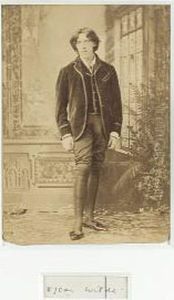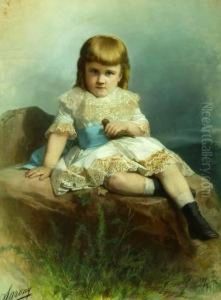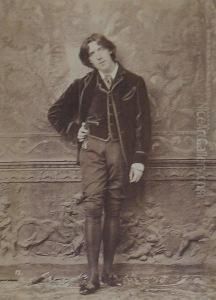Napoleon Sarony Paintings
Napoleon Sarony was a prominent Canadian-American lithographer and photographer, particularly known for his portraits of the celebrities of his time. He was born on March 9, 1821, in Quebec City, Canada, but his family moved to New York City when he was a child. His father, a lithographer, was a significant influence on his early career choice.
Sarony initially worked as an illustrator before transitioning into the world of lithography, which was at the time a leading method for mass-producing images. In the 1840s, he joined forces with James Major and formed the lithography firm Sarony & Major. This firm was successful and well-regarded, and its work included a variety of subjects from theater and celebrity prints to maps and maritime scenes.
In 1866, Sarony left the lithography business to establish a photography studio on Broadway in New York City. His timing was impeccable, as photography was becoming quite fashionable and was replacing lithography as the preferred means of reproducing images. Sarony became famous for his photographic portraits of notable personalities of the day, including actors, singers, and other public figures. He was particularly adept at capturing the essence of his subjects, and his photographs were renowned for their clarity, detail, and artistic composition.
One of the most notable aspects of Sarony's work was his flamboyant style and his ability to market his portraits as works of art. He often posed his subjects amidst elaborate settings and costumes, which not only flattered them but also added a sense of drama and character to the portraits. His studio became a fashionable destination, and sitting for a portrait by Sarony was considered a status symbol among the elite.
Sarony's contribution to the field of photography extended beyond his celebrity portraits. He was also involved in legal issues concerning copyright of photographs, most notably in the case of Burrow-Giles Lithographic Co. vs. Sarony, in which the United States Supreme Court upheld the copyright of his portrait of Oscar Wilde. This decision was a landmark case in the recognition of photographic works as creative and intellectual property deserving of copyright protection.
Napoleon Sarony continued to work until his death on November 9, 1896, in New York City. His legacy lives on through his portraits, which remain valuable records of 19th-century American culture and the artistry involved in early photographic portraiture. Sarony's work is held in high esteem amongst historians and collectors and can be found in various institutions and private collections worldwide.



